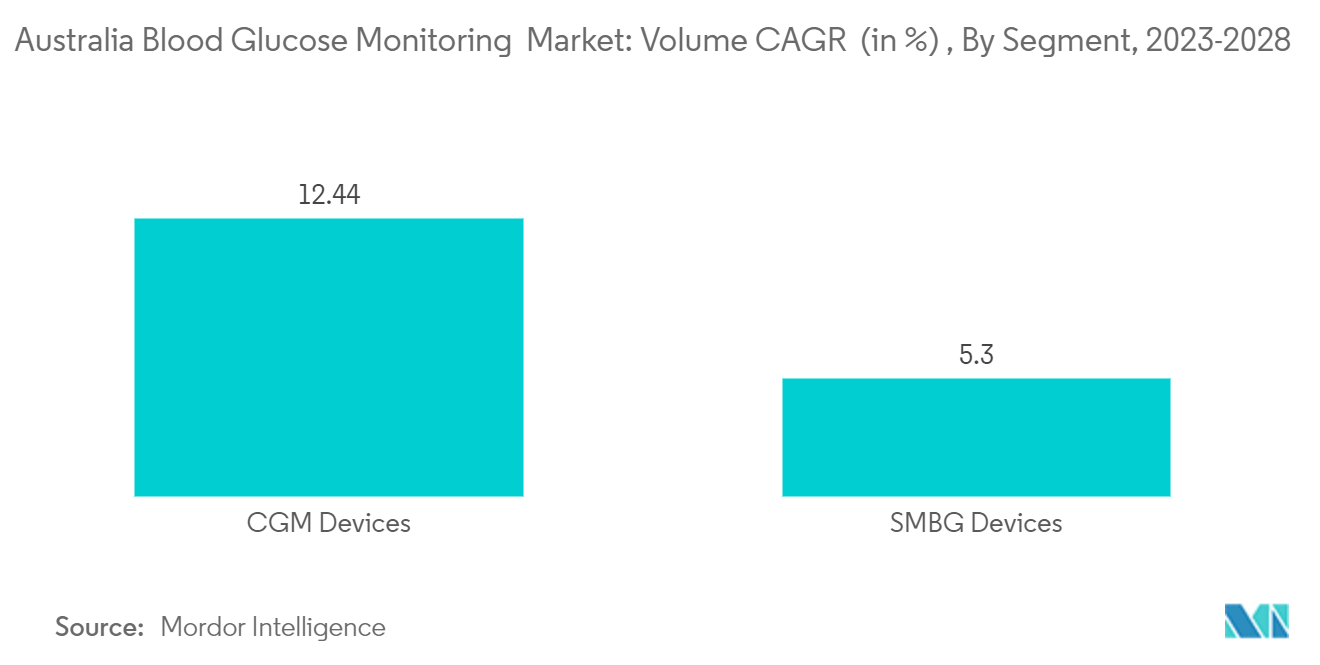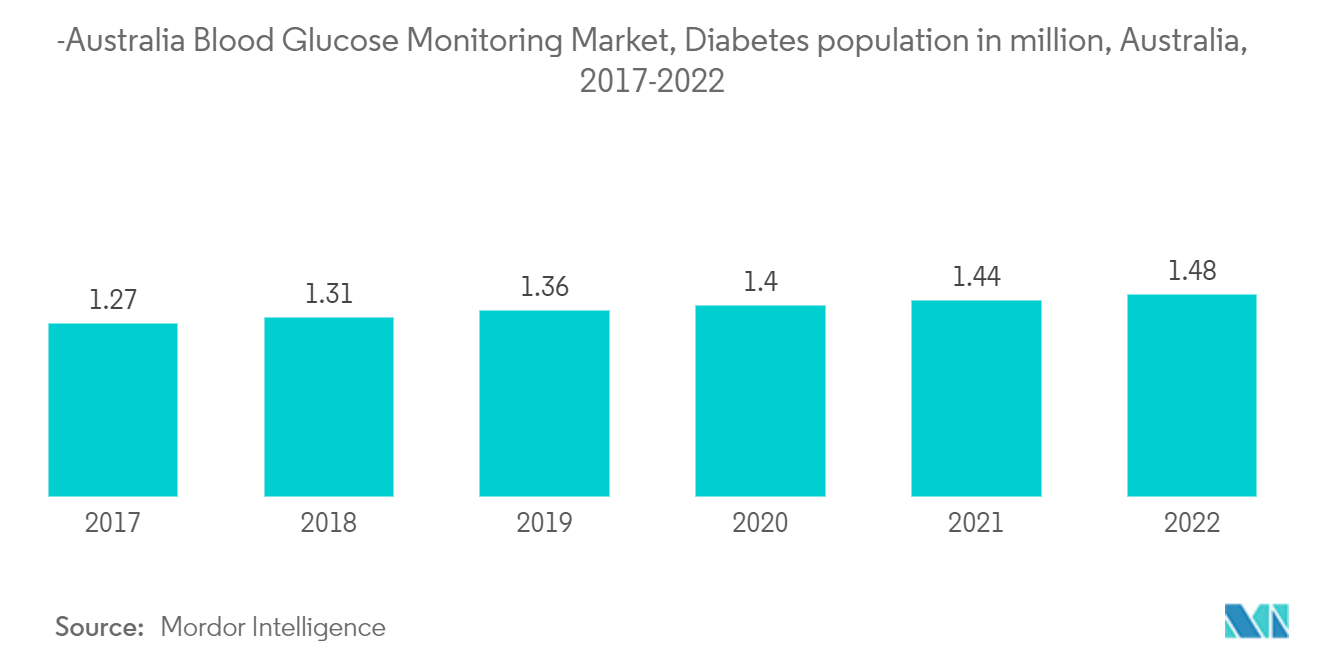Market Trends of Australia Blood Glucose Monitoring Industry
The continuous glucose monitoring segment is expected to witness the highest growth rate over the forecast period.
Continuous glucose monitoring devices measure blood sugar levels using glucose oxidase. Glucose oxidase transforms glucose to hydrogen peroxidase, which combines with the platinum inside the sensor to provide an electrical signal that is sent to the transmitter. The most significant component of continuous glucose monitoring is the sensors. During the projected period, technological developments to increase sensor accuracy are likely to boost segment growth. Researchers are looking for and developing alternatives to electrochemical-based glucose sensors in order to build more inexpensive, less intrusive, and user-friendly CGM devices. Optical sensing is a potential platform for glucose detection. Some technologies, including spectroscopy, fluorescence, and holographic technology, have been found to offer considerable promise in continuous glucose sensing. Eversense, a CGM sensor invented by Senseonics Company that uses fluorescence detection, has a substantially longer lifespan than electrochemical sensors.
The regularity with which glucose levels are monitored is determined by the type of diabetes, which varies from patient to patient. Type 1 diabetics must check their blood glucose levels on a frequent basis in order to monitor their blood glucose levels and modify their insulin dose accordingly. Type-1 diabetic individuals spend roughly twice as much money on these devices as Type-2 diabetics. When compared to a routine check of glucose levels at fixed intervals, contemporary CGM systems provide a more complete picture of blood glucose patterns and trends. Furthermore, contemporary continuous glucose monitoring systems may either depict trends in blood glucose levels retrospectively by downloading data or provide a real-time image of glucose levels via receiver displays.

The increasing Diabetes Population in Australia is driving the market.
Between 1991 and 2022, the prevalence of diabetes in Australia more than doubled. Currently, Australia has over 2 million diabetic sufferers. According to Mordor Intelligence data, Type-2 diabetes patients made up the majority of the diabetic population in Australia this year. Nonetheless, diabetes is significantly more common in Australia than in many other countries. One of the most important aims of diabetes treatment is to keep blood glucose levels within a specified target range. It is possible to do this by balancing food, activity, lifestyle, and diabetes meds. The results of blood glucose monitoring provide the information required to determine the best diabetes management strategy. Maintaining target blood glucose levels can help reduce a person's risk of developing diabetes-related complications such as diabetic retinopathy and heart disease. Diabetes patients have blood glucose imbalances that do not correspond to traditional blood glucose levels. The basic lab diagnostic tests can only help doctors diagnose the disease. Patients whose glucose levels change more often should have them checked every day. Patients who take insulin must often evaluate their blood glucose levels and adjust insulin doses or change drugs as necessary. People with type 2 diabetes who do not take insulin require oral medications on a regular basis. In response to diabetes, the Australian National Diabetes Strategy was formed, which explained how current restricted healthcare resources across all levels of government might be efficiently integrated and targeted. This approach identifies the most successful and appropriate measures for reducing the community burden of diabetes and establishes the benchmark for future efforts.
Youth are more prone to get diabetes at a younger age due to the earlier age and longer diabetes duration, reducing their quality of life, shortening their life expectancy, and raising societal healthcare expenses. As a result, demand for diabetes care devices is increasing, as is their acceptance rate, boosting the market. Furthermore, with improved awareness among Type 2 diabetes patients, the need for Diabetes devices is developing rapidly.


